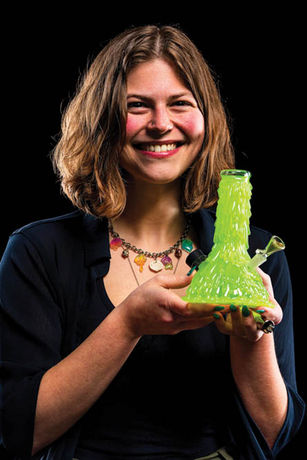When you leave the dispensary with the newest heat from your favorite cultivator in-hand, you may not realize it, but decades of genetic cross-breeding, thousands and thousands of scrapped batches, painstaking rounds of assessment and data gathering, all led to that weed strain ending up in that jar.
Each year, The Flower Issue aims to shine a light on this beautiful bud we all enjoy and the people who spend their entire lives trying to make sure we don’t have to smoke the same old strains every day.
We caught up with some of the world’s premier Cannabis geneticists to learn what really pops their seeds … and to hear what they have in the works for 2024 and beyond.
Nat Pennington
Humboldt Seed Company
Humboldtseedcompany.com
Cola photos by Erik Christiansen @erik.nugshots
Portraits Courtesy Humboldt Seed Company
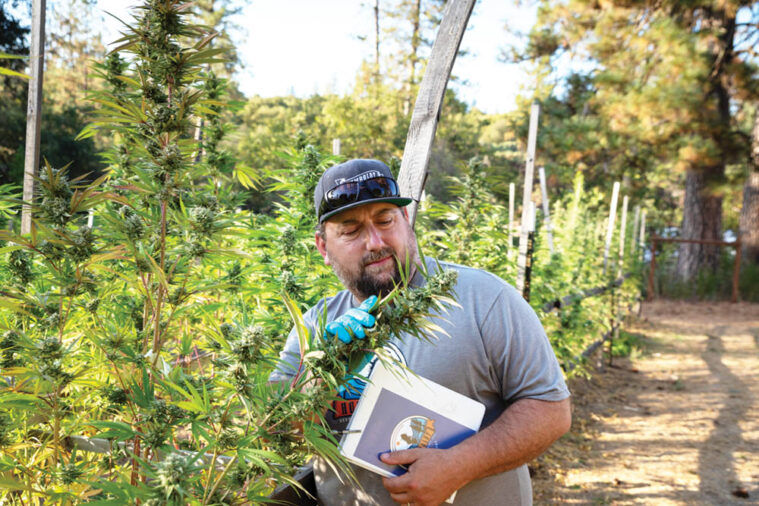
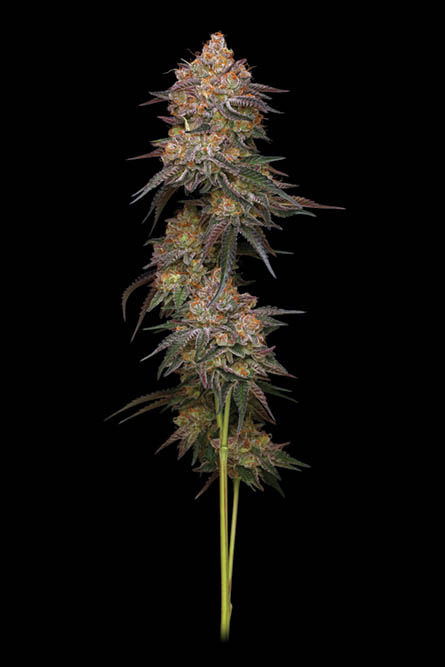
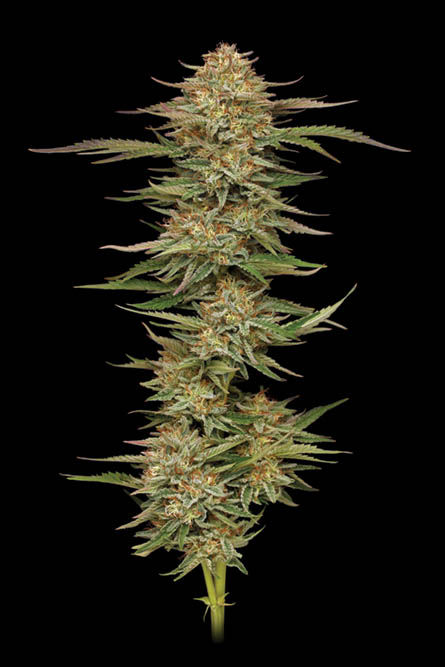
Humboldt Seed Company brings a familial approach to the concept of a global Cannabis genetics business. Run by father-daughter team Nat and Halle Pennington, along with Nat’s partner Ben Lind, HSC currently produces new genetics in facilities on multiple continents.
Their efforts in 2023 included a massive, multi-farm collaborative pheno hunt that provided them with the data they needed to enable them to bring the world’s first Cannabis triploids to market – which possess three copies of chromosomes instead of the usual two – and are 99% seedless due to natural breeding techniques and selective pressures. That project also solidified some new winners they’re bringing to market: the juicy Orange Creampop and the tasty treat called Granny Candy.
Pennington shared some of his vision for the future with the Leaf for this issue.
On what he looks forward to in 2024:
We’re excited to see folks’ reaction to new strains like Granny Candy and Orange Creampop, of course the triploids too. We’ll be producing true breeding F1 Hybrid seed over the summer and that is the result of 20 years of breeding pure lines. This means that seeds will be uniform from plant to plant, like clones, and will display vigor like we’ve never seen in Cannabis.
On the implications of the new triploid genetics:
“It is definitely a new frontier – triploids can increase yields, cannabinoids, terpenes and even make a strain much better for hash production, as we showed in our study with Resin Dial. Hopefully triploids can increase the chances for small farms and lower carbon production and the burden on the nation’s power grid.”
On their current projects on the global Cannabis scene:
“We just completed a massive phenotype hunt in the Caribbean and we are spending time in Morocco this spring – planning research and phenotype hunting projects there, as well as learning about the traditional hash production that the area is known for.”
On the trends they see across the global markets:
“We’ve seen candy strains have a big run over the last couple months in LA and parts of the rest of the country. The European community is still coveting anything that’s not a Haze or Cheese strain, while at the same time New York City seems to love a Haze strain called The Piff. We’ve learned that a ‘one terp fits all’ philosophy just doesn’t work, which is why we breed such a diverse variety of strains. We’ve always said that the best Cannabis is having a bunch of different kinds of Cannabis!”
James Loud
James Loud Genetics
jamesloudgenetics.com
Portraits by Ben Lohrentz
Cola photo by Daniel Peterson/House of Cultivar (cultivator)
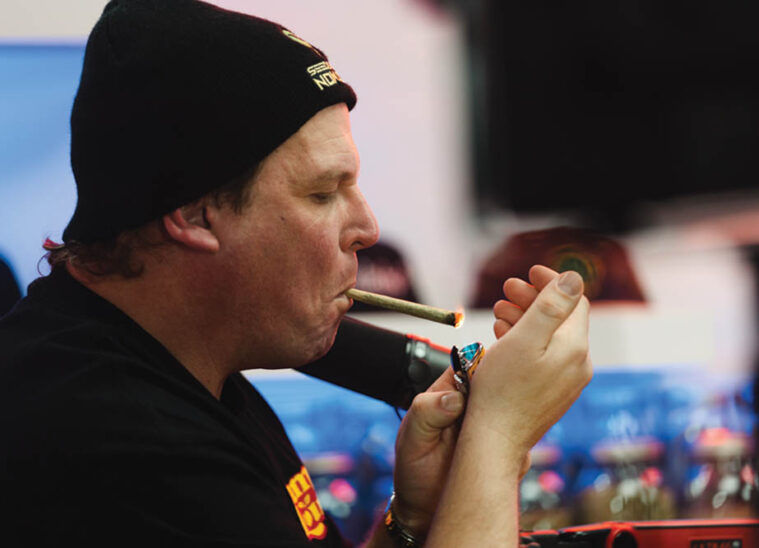
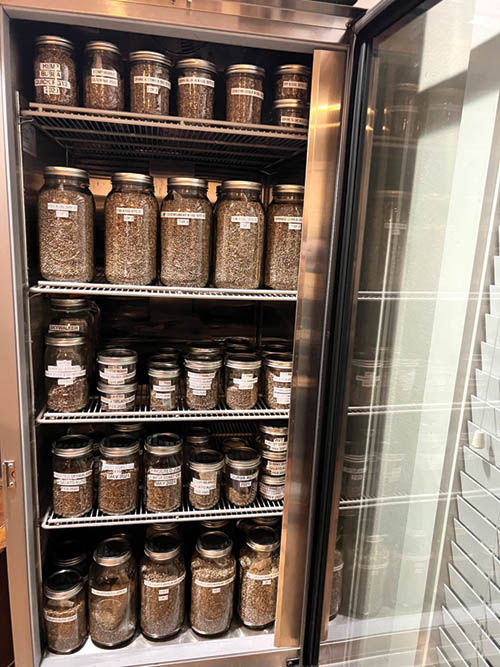

James Loud is a former award-winning chef from the San Francisco culinary scene who took his 30+ year love affair with Cannabis and turned it into a career as a respected seed breeder, educator and hype man for the plant.
Operating out of his James Loud Genetics facility in Northern California, Loud produces seeds under his own label and also grows them for some of the largest seed sellers in the world. His podcast features an ever-expanding list of respected figures in the Cannabis scene, and he recently published a book to share his knowledge with the cultivation community.
On his origin story as a Cannabis breeder:
“I got into Cannabis in 1991 in the Bay Area. In the early ‘90s, my brother had plants that we hid in the neighbor’s backyard. We’d bring ’em and put ’em in our backyard during the day, and then my parents would come home and my brother would have them stashed in the backyard. I love everything about the plant. Breeding was something that just came naturally. It was a natural evolution. … We wanted something different. Back then there wasn’t as much genetic diversity. I kind of saw breeding early on – most of my friends thought it was funny that I wanted to do a seed company and they didn’t quite get it … in 2008, 2009. We were making crosses and really kind of eyeing the seed model – I was thinking, ‘Man, this could be really good.’ Because we can have pot and we can also make money selling seeds – we could have our own version of Sour Diesel, which was the big thing. We were all about Sour Diesel back then. And so that kind of evolved. There was Sour Diesel, OG Kush, Chem Dog. Those were all the rage before Girl Scout Cookies. Those were the exotics of their time, and we all wanted our own versions of those things.”
On his new book, Cannabis Breeding:
“I’ve been working on it for five years; it’s the fifth version of the book and finally we got it down. I got a really good team together – the best editor, the best layout person. Angela Baca did the editing along with my wife Jeanette, and we got contributions in the book from so many people. It’s a 380-page book and I’d say there’s like 15 other people that contributed something … it’s a group effort and I think the book came out really, really good. I’m super happy – it’s been quite the journey and it’s still not over. Now we have to market it.”
On the cultivar that impacted him the most in his life:
“The most impactful cultivar in my life was Cat Piss. It was so strong and pungent that you could walk in a room and you could smell the Cat Piss – whether it was the flower or the smoke – you’d know right away it was Cat Piss. It tasted good all the way down to the roach. You could smoke a roach a week later, and go, ‘That’s the Cat Piss roach.’ And that’s what made me fall in love with weed, to be honest.”
On what makes a winning strain:
“How does it smoke and how does it taste? I want to know the effect. I want to know all these things. I feel like those things are really what makes it, and some of that stuff gets lost with people. People get so excited about the way stuff looks, and the way it films for social media. Social media has taken us into a bad direction in breeding a little bit, because it’s all about looks.”
On finding his place in the genetics world:
“I believe in self-improvement, and I think that self-improvement over time equals success. Being passionate about what you do, that’s super important to me. … I’m not trying to be the biggest and the best. I’m just trying to be the best that I can be. Training Jiu Jitsu has taught me that. As a business owner, you learn how to fail a lot and you learn to accept failure. … If you love it, keep doing it – and eventually you’re going to be good at it. And I feel like that translates to anything that you do, whether it’s growing or whether it’s cooking or whether it’s swimming – whatever it is, you do it enough, you get good at it. If you’re passionate about it, you’re going to get really good at it.”
Mario Guzman
Sherbinskis
Sherbinskis.com
Photos by Jordan Badran @scooch_lifestyle
Cannabis photos by Dustin Copeland @theflowery.florida
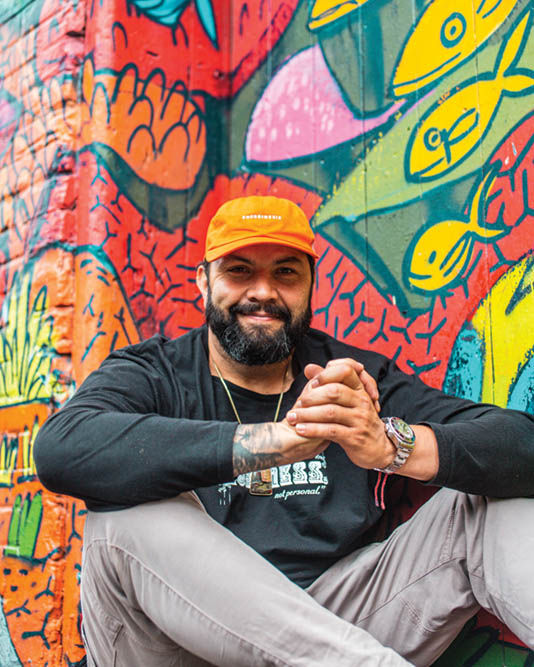
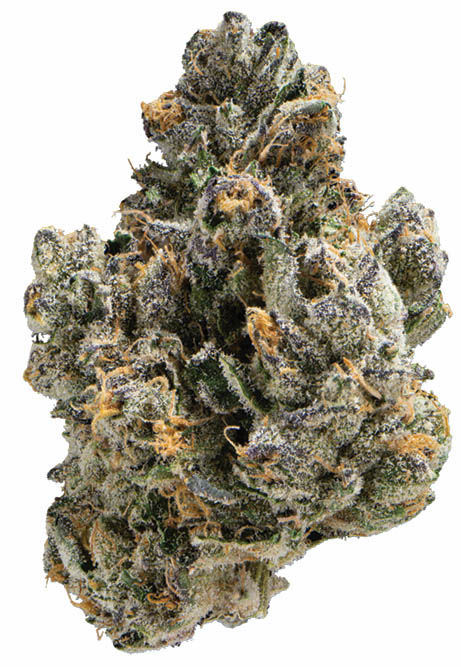
There isn’t a Cannabis brand on the market today that doesn’t owe a debt of thanks to Mario Guzman. The Sacramento-born Bay Area legend developed the Sunset Sherbert strain, and followed that up with Gelato.
Every head stash in the past decade has had something that came from that lineage at one time or another. His company Sherbinskis continues to develop new genetics and push the boundaries of the Cannabis genetics scene.
On how he knew he wanted to be a Cannabis breeder:
“I’ve never been a very technical person when it comes to tech. I am more of a high EQ, hands-on person. When I started growing and working with plants, I found a huge admiration for the hard work and satisfaction of a hard day’s work. Building my first grow myself and all the ones that came after, and building a team and a community drove me – and I fell in love. This was the early 2000s.”
On his sources of inspiration:
“I’m inspired by the people that do the heavy lifting in life and don’t look for pats on the back or accolades. They just do the work selflessly. They are who they are behind closed doors when no one is looking. They still do the right thing. These are the people that I look up to.”
On the growers he admires:
“The garage growers around the world who put their heart and soul into every gram they grow. And also the generational outdoor farmers that this industry is built on. The generations of farmers that came before the social media era, and have nothing left of their faces now but the legendary stories of the people that lived this life before us, and paved the way for the life that we now know as the ‘industry.’”
On when he knew Gelato was going to be a hit:
“I knew it would be a hit when I started smoking some of the first batches I grew. The look, smell, feel – were all something new. The Sunset Sherbert as a parent is one of the keys to why Gelato is so good and makes you feel amazing. To this day it’s one of my favorites, the parent to the Gelato.”
On selecting genetics to release into the world:
“The world’s needs are growing! There is such a huge variety of needs for certain markets and climates/environments. My work with genetics has broadened my learning and understanding of those needs and it goes way beyond just Gelato, which is really exciting to me. My library goes much further as I’ve been fortunate to be given genetics by the top breeders in the world and have opportunities globally to pursue.”
On his current focus:
“I’m 1000% completely focused on delivering flower to the global market through EUGMP facilities. And also the development of my new platform/brand called ‘Voice of the Plant.’ It’s my passion project and vision of creating a platform for all plant medicine thought leaders, and connecting people with plants through creative interactions with music, art and food.”
On Genesys, the mysterious space-age social media series he posted on the Sherbinski’s Instagram:
“I had some fun telling a story with AI. It was for the people that saw what it was at its core. The world is changing.”
Chris Lynch
Cipher Genetics
cipher-genetics.com
Portrait by Elliott Vecchia @elliott_vecchia
Cola Photo by Mark Archer @thecuratorco.me
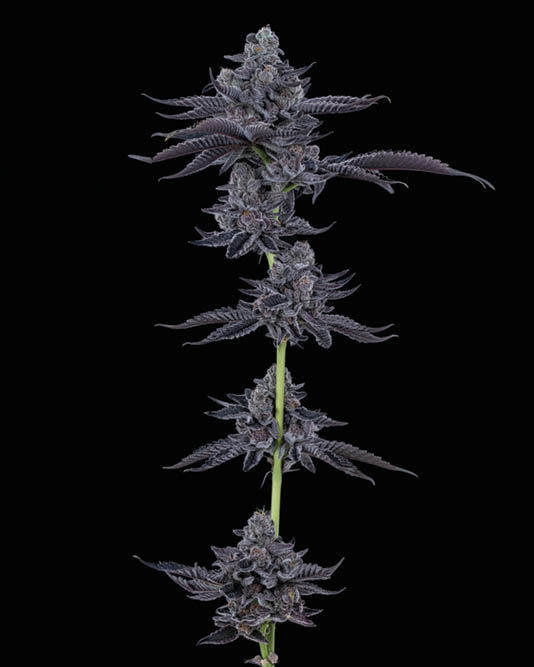

Chris Lynch has been churning out hype strains from his facilities on the West Coast for years. As the mind and palate behind Grape Gas, Horchata, Gastro Pop, Pink Certz and a number of collabs with Berner from Cookies like Apples & Bananas, Lynch needs no introduction among heat-seeking flower fanatics. His latest release, Blue Lobster, dropped in exclusive collabs on both coasts. (Find more on Blue Lobster in this month’s California Leaf and Northeast Leaf magazines.)
Leaf connected with Lynch to learn more about his new company, Cipher Genetics, and hear his thoughts on the state of the strain world.
On his origin story:
“My love for Cannabis started around the age of 14. I saw pictures of Cannabis for the first time in magazines at the grocery store, and thought it looked so unique and special. Over the next 20 years, I became more and more fascinated with everything related to the plant. I grew up in Portland, Oregon, and always had access to high-quality flowers and this fueled my love and passion. In 2013 a friend named OneEye made the cultivar Dog Walker OG. The market was starting to become saturated with similar strains and prices were going down. OneEye was able to maintain a strong demand for his flower because he had exclusive genetics. Dog Walker was trending in the state and everyone wanted it. This opened my eyes to the power of Cannabis genetics and how unique flavors were very appreciated. This spurred my desire to focus heavily on genetics and pushed me over to the next level. I already loved all things Cannabis, but this experience propelled me to see things in a different light. From that point on, I became obsessed with collecting rare cuts and breeding with them. I was constantly testing the new strains and I enjoyed giving them unique names.”
On his influences:
“The time I spent in Amsterdam was my first burst of influence. I had impactful experiences hanging out with Soma that were a major source of inspiration. I was also inspired early on by Exotic Genetix, Archive Seeds, DNA Genetics, Cannarado, Jungle Boys, and a handful of others. Over time, I’ve learned to trust my personal taste for genetics and listen to my inner voice for guidance. This combined with daily feedback from the Cannabis community helps guide my direction and vision.”
On finding pride in his work:
“I’m proudest of how my work with the plant has impacted the Cannabis community and people’s lives. It’s amazing to see how far-reaching it goes. Hearing from people all around the world about how my genetics improved their quality of life and health is so powerful. Some of my favorite creations are Apples & Bananas, Blue Lobster, Gastro Pop, Pavé and Grape Gas.”
On his new company, Cipher Genetics:
“We’re focusing on breeding new cultivars with strong therapeutic benefits at Cipher Genetics. All the new strains we create awe us with impressive terpene profiles, cannabinoid levels and flower morphologies. I’m working with Kate, my partner, who has a strong molecular genetics background. She brings a tremendous amount of knowledge and insight to Cipher that makes for a strong work dynamic together. Our next big project is the Blue Lobster seed collection in collaboration with Maine Trees, which is scheduled to drop later this year.”
On what he considers when selecting new genetics:
“I look for genetics that check all of the boxes for desired traits and stand apart from the rest. I want to bring new profiles to market, not more of the same.”
On candy terps and the future of trends in the flower market:
“Limonene, a main terpene in the ‘candy nose,’ is highly regarded in pharmacology research for its anti-anxiety, anti-inflammatory and pain-reducing effects. Limonene and another candy terpene, linalool, increase THC potency. Candy and dessert terpene profiles also activate the dopaminergic areas in the brain when smelled, so there’s another reason they’re so popular. I think skunk and gas strains will still keep a sizable foothold in the industry. Skunky B-myrcene, spicy B-caryophyllene, a-terpineol and gamma-terpinene are noted as pain-relieving compounds as well. I think the industry will stay focused on the highest terpene content strains because their effects are impressive. The gas and spicy profiles won’t be lost in favor of only candy strains, because every terpene has a high medicinal value.”




